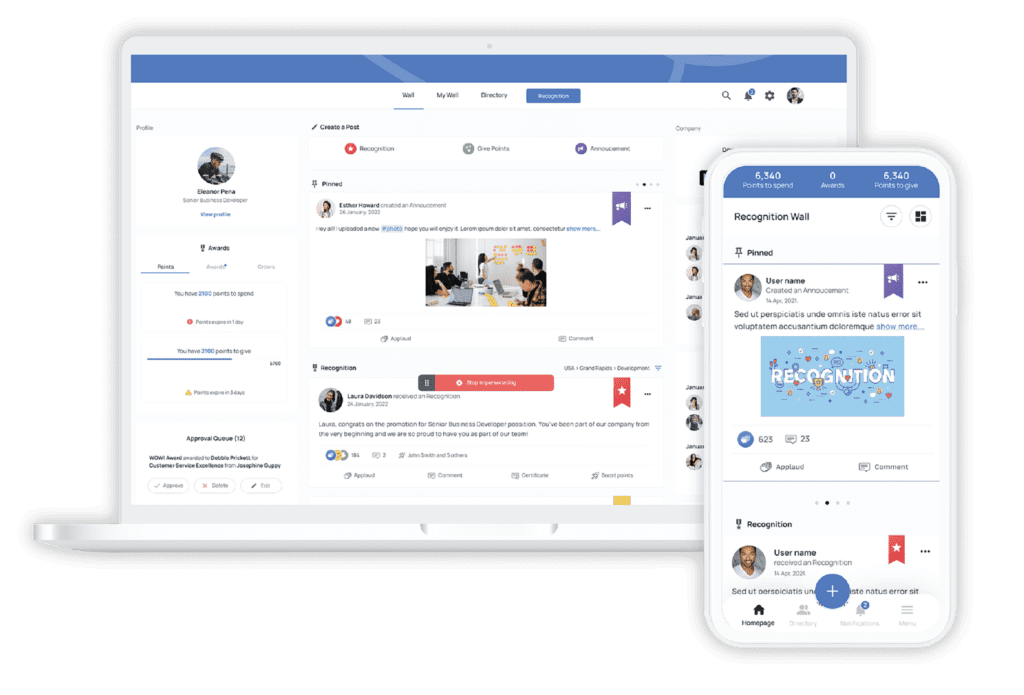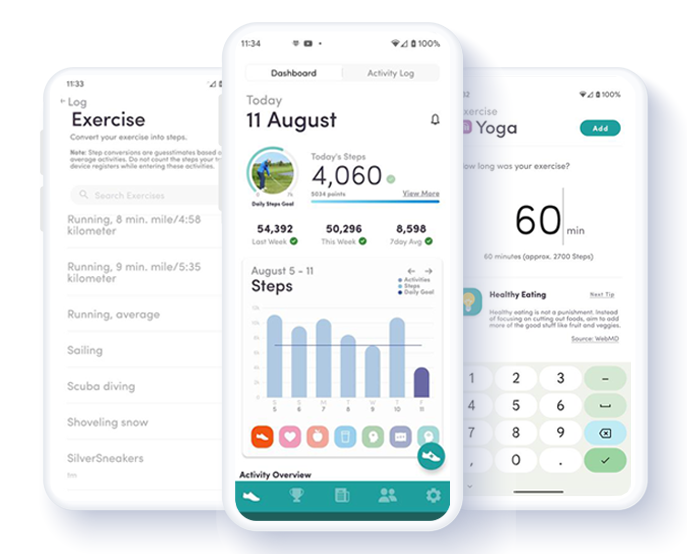January 22, 2024


When it comes to Human Resource trends, some things never change – improve retention, boost employee engagement, keep morale high. But some things do change. And with HR departments everywhere being busier than ever before, we’re here to help.
Here, we’ll guide you through key ideas that we predict to be the most influential emerging HR trends in 2024.
Top HR Trends for 2024
AI
By now, we’ve all heard plenty of talk about artificial intelligence – it seems to be everywhere from cars to Photoshop. But what exactly it is and what role it can play in HR trends in 2024 is another story.
First of all, artificial intelligence (AI) is the simulation of human intelligence through the use of machines or software. Common examples of AI are smart home devices like Alexa, sites like ChatGPT, and the facial recognition used to unlock your iPhone.
But AI can also be used in HR. Below are just a few examples of how AI can help revolutionize HR:


- Chatbots: HR chatbots can be used as an always-on channel for employees to communicate with your organization. This can help provide valuable anonymous feedback for employers. Chatbots can also be used in the hiring process as a first step in the interview process and can even be used to guide new employees through the onboarding process, providing information and answering questions. Chatbots can also provide immediate support for HR-related queries, reducing the burden on HR teams for routine tasks.
- Candidate Matching: AI algorithms can analyze job requirements and candidate profiles to provide more accurate and efficient matches. Some experts say that using AI for this process can help eliminate implicit bias in the hiring process.
- Predictive Analytics: AI can analyze historical data to predict future trends, such as identifying high-performing employees, potential turnover risks, or training needs.
- Performance Management: AI tools can provide real-time feedback to employees, analyze performance data, and assist in identifying areas for improvement. It can also create personalized learning paths using AI algorithms, catering to individual employee needs and preferences.
- Automation of Repetitive Tasks: Mundane and repetitive HR tasks, such as data entry and document processing, can be automated using AI, freeing up time for more strategic activities.
It's important for organizations to implement AI in HR ethically and transparently, ensuring that AI tools are used to augment human capabilities rather than replace them. Additionally, considering data privacy and security is crucial when implementing AI in HR processes.
Flexible Work Arrangements


Now, four years from the start of the pandemic, many organizations are still testing out different working arrangements. For a while, some of this was inevitable as different states had different regulations.
But now, experts are predicting 2024 to be the year that companies begin to slow down on experimenting and instead start to solidify their arrangements.
If you haven’t determined your permanent arrangement quite yet, there are a few things you can do to ensure you’re making the best choice for your organization.
First, help reduce resistance to change by engaging your employees in these discussions around flexible work policies. Not only will this encourage buy-in, but it will also help employees feel seen and heard — important elements of belonging.
For example, asking employees to return to the office will inevitably add some burden to employees, from added expense to mental health concerns. So, involving employees in these discussions shows awareness, respect, and consideration.
From there, be sure to communicate reasonings for whatever changes occur – especially if the changes will be perceived as negative by employees. Backing up your reasoning for changes with data, both internal and external, will help clarify any confusion and keep the decision neutral.
Furthermore, give people ample time to adjust to whatever your changes may be. As mentioned, there will be added expenses associated with more in-office days, and employees may not have a great home office setup if there will be more remote days. Time is crucial for helping people adjust.
HR Tech


Another trend expected for 2024 is HR tech, or Human Resources technology. This is because HR tech can significantly improve workflow by streamlining processes, enhancing efficiency, and providing valuable insights.
Here are several ways HR tech can contribute to workflow improvement:
- Learning and Development: HR tech platforms can provide Learning Management Systems (LMS) that facilitate training and development programs. Employees can access training materials and courses, enhancing their skills and knowledge.
- Data Analytics and Insights: HR analytics tools can help HR professionals make data-driven decisions by providing insights into employee engagement, turnover rates, and overall workforce trends. This information is crucial for strategic planning.
- Communication and Collaboration: Communication tools integrated with HR tech can improve internal communication. Collaborative platforms enable teams to work together seamlessly, fostering a more connected and productive work environment.
- Employee Recognition Software: Whether it’s a milestone and service award program, peer-to-peer recognition on a social recognition platform, or an employee wellness program - employee engagement and recognition will continue to move more and more online.
Strikes and Employee Pushback


If you’ve noticed more worker strikes lately, like the UAW strike in 2023, you’re not alone. In 2022, the Bureau of Labor Statistics found that the number of work stoppages involving 1,000 or more workers increased by nearly 50% over the previous year. And experts are predicting this trend to continue for HR in 2024.
There are many thoughts as to why this is, but ultimately workers are beginning to hold their employers to a higher standard than before. From compensation to flexible working arrangements to benefits – if you’ve been getting away with the bare minimum, it’s likely to soon no longer be sustainable.
So, effective HR professionals will need to take the opportunity to engage in meaningful conversations with employees about their needs and expectations. This is again where survey tools can be helpful.
Send out regular pulse surveys to gauge sentiment and engagement, as well as predict future turnover. And be sure to act on results to show employees you care about their perspective. But that’s not all you can do.
Take a proactive approach to pay and make sure cost-of-living raises at least match inflation. If you’re asking employees to return to the office, make the office a place employees want to be. Invest in your space and take advantage of being together by having team-building events and activities.
Diversity, Equity, and Inclusion (DEI)


DEI has been a turbulent initiative over the past few years. According to Indeed, job postings with DEI in the title jumped 92% from July 2020 to July 2021. But the deceleration has come just as swiftly. Many companies have made budget cuts and have pulled back on DEI, resulting in a 38% drop in DEI job postings, according to Indeed.
Furthermore, research from Harvard Business Review found that employers say they’re making DEIB changes — but employees don’t see meaningful progress.
In the survey, 97% of HR leaders say their organization has made changes that improved DEI. However, just 37% of employees strongly agree that their workplace has made changes to improve DEI. What’s worse is that an additional 34% of employees say they “don’t know” whether their leaders are making changes related to DEI.
So, similar to flexible working arrangements, experts are saying 2024 will be a year for HR to either commit to DEI initiatives or to stop – at least for now.
If you are going to continue with DEI, focus on the rationale - Make the business case for bringing on a diversity of backgrounds and experiences. Tie DEI efforts to your organization’s goals of making money, saving money, and/or achieving an overall vision. This will help give DEI long-term staying power at your company.
Upskilling Talent and Career Planning


If there’s one way to improve employee engagement and retention, it’s to give employees a reason to stay. One of the most effective ways to achieve this is through career planning and skill development.
Managers will need to maintain open communication with their employees to be able to accurately determine upskilling opportunities and long-term career goals of their direct reports.
Then, conduct a skills gap analysis to identify the current skills of your workforce and the skills required for future roles. This will help you target specific areas and individuals for upskilling.
Also, work towards a learning culture. Meaning, encourage employees to view learning as a continuous process and recognize and reward those who actively seek to improve their skills. Don’t reprimand when employees try something new that doesn’t work out, and instead work together to highlight what was learned. This not only helps improve company culture overall, but it also helps develop psychological safety at work.
Wellness


As Millennials and Gen Z continue to enter the workforce and advance in their careers, their values will continue to influence corporate wellness initiatives. Establishing wellness programs where there are none and emphasizing holistic wellness will become more common throughout 2024.
Companies should expect to see more:
- Focus on Holistic Well-Being: Corporate wellness programs are likely to expand beyond physical health to encompass holistic well-being. Employers may increasingly emphasize mental health, emotional well-being, and work-life balance as integral components of wellness initiatives.
- Technology Integration: The integration of technology, including wearables and health apps, may become more prevalent. Companies could leverage data from these technologies to personalize wellness programs and provide real-time insights to employees.
- Remote and Flexible Wellness Programs: With the continued prevalence of remote and flexible work arrangements, corporate wellness programs may need to adapt to cater to distributed teams. Virtual wellness initiatives, virtual employee step challenges, online fitness classes, and digital mental health resources may see increased popularity.
- Enhanced Mental Health Support: Given the growing awareness of mental health issues, companies are likely to place a stronger emphasis on mental health support. Employee assistance programs (EAPs), counseling services, and stress management initiatives may see increased investment.
Next Step
Keeping up with changing times is no easy feat, especially for already overworked HR departments. But that's where Terryberry can help.
Terryberry's comprehensive suite of solutions makes streamlining initiatives easy. With tools like engagement surveys, recognition software, and peer recognition platforms, Terryberry provides everything you need to head into 2024 – all in one place.
- Engagement Surveys: Use Terryberry's surveys to gather employee feedback. This data can guide your planning and help tailor initiatives to meet the needs and interests of your workforce.
- Employee Recognition Software: Terryberry's recognition software makes it easy to celebrate the achievements and contributions of employees. It provides a platform for acknowledging and appreciating the diverse talents within your organization.
- Social Recognition Software: Encourage a culture of peer recognition where employees can celebrate each other's contributions and learn from diverse perspectives.
Schedule a demo with Terryberry today and discover how our solutions can transform your approach to celebrating Black History Month and enhancing your overall diversity and inclusion strategy.


